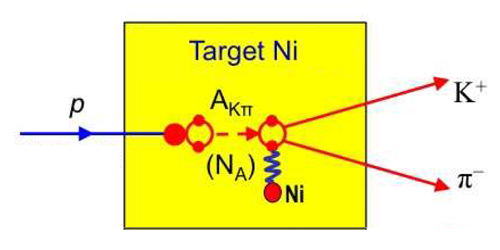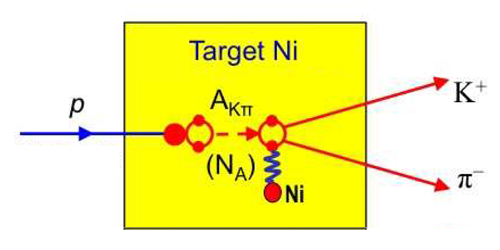Strange Mesonic Atoms Detected
An atom is normally a nucleus surrounded by electrons. But physicists have observed several exotic atoms comprising other particles, such as mesons (two-quark particles). Following earlier hints, a new analysis of data from the DIRAC experiment at CERN finds the first conclusive evidence of an atom made up of a meson (containing up and down quarks) and a meson (containing up and strange quarks). Further study of these strange dimesons should give insight into how quarks interact at relatively low energies.
Meson-containing atoms, such as kaonic hydrogen (proton plus ) and pionium (two oppositely charged mesons), are bound together by electromagnetic forces. However, strong force interactions between quarks cause the atoms to decay. Precise measurements of these decay lifetimes would place important constraints on the probabilities of low-energy quark scattering, which cannot be calculated directly.
The DIRAC experiment was built to detect and characterize atoms (as well as atoms). To create these bound states, the researchers fire a high-energy proton beam into a thin metal sheet. Collisions between protons and metal nuclei occasionally produce atoms, and some of these atoms collide with other nuclei, causing them to dissociate into unbound pairs. DIRAC is designed to detect these pairs using a double-arm mass spectrometer. Previous results showed evidence of atoms, but the underlying statistical significance was too low to claim a detection. The DIRAC collaboration has now combined data from trials using different metal sheets and has improved estimates of the background from pairs unrelated to atoms. The team reports the detection of over 300 atoms. Additional analysis is continuing to extract the lifetime of the decay.
This research is published in Physical Review Letters.
–Michael Schirber
Michael Schirber is a Corresponding Editor for Physics based in Lyon, France.





